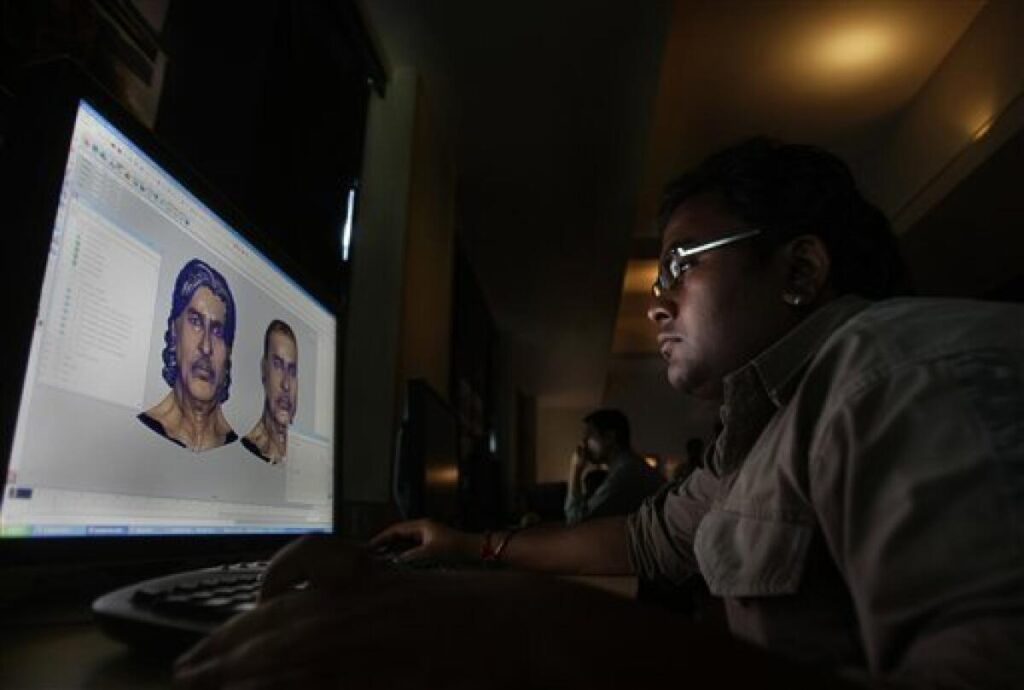The Shortage Of Personnel In India’s Special Effects Sector. During his childhood, Vinay Sastha R’s imagination was sparked by movies such as The Lord of the Rings and the Harry Potter series.

Table of Contents
Vinay Sastha R Currently Contributes To The World of Cinema
In contrast to the majority, Vinay Sastha R currently contributes to the world of cinema. Operating from Trichy in southern India, Mr. Sastha R serves as a technical director specializing in the creation of visual effects (VFX) for DNEG, a prominent VFX studio in India.
Despite his relatively brief tenure of two years in the industry, at the age of 26, he finds joy in working on exciting projects. Explaining his role, he states, “A technical director primarily deals with crafting elements that couldn’t be captured during filming… such as conjuring a lava rain in a city, freezing rain in mid-air, or depicting the moon melting—anything fantastical you can imagine.”
Mr. Sastha R has benefited from the flourishing VFX industry in India, driven by increasing demand not only from the domestic film sector but also from international companies outsourcing work to India. Streaming platforms like Netflix, animated TV and film producers, and the gaming industry are among those seeking more VFX expertise.
The VFX industry: The Shortage Of Personnel In India’s Special Effects Sector
Namit Malhotra, founder of Prime Focus, a major Indian media firm that owns DNEG, notes, “The VFX industry has surged due to an infusion of visual effects in almost all the entertainment sector.”
India’s cost-effectiveness and the widespread adoption of cloud computing have facilitated its prominence in outsourcing VFX work for global projects. Ketan Mehta, founder of Cosmos Maya, predicts that it’s only a matter of time before Indian studios handle all the visual effects for significant global productions.
However, being interconnected with the global market exposes India to external challenges. The Hollywood strikes last year had a noticeable impact on the Indian market, leading to layoffs, downsizing of production houses, and project delays.
Despite these challenges, industry experts like Mr. Mehta are optimistic about the recovery of the market. The next hurdle for the Indian VFX industry lies in addressing the growing demand for skilled personnel. Currently, around 250,000 people work in the VFX and animation industry, and the Animation, Visual Effects, Gaming, and Comic (AVGC) Task Force estimates that this number will reach 2.2 million by 2032.
To meet this demand, the AVGC Task Force is collaborating with universities and colleges to develop courses and qualifications. Ashish Kulkarni emphasizes the importance of industry leaders getting involved in education to motivate aspiring individuals to pursue careers in VFX and animation.
While India has a pool of young people with technical skills, there is a need for courses that provide a deep understanding of filmmaking and the artistic side of visual effects. The introduction of new VFX courses by universities and institutions is helping bridge this gap.
Despite India’s economic growth, the cost of VFX and animation courses, along with the required hardware and software, remains a challenge. Kshitiz Sharma suggests involving big media and tech companies to share the financial burden and make educational tools and technology more accessible to students.
Artificial intelligence
Artificial intelligence (AI) is seen as a potential solution to the staffing shortage in the industry. AI has already transformed the filmmaking process, allowing for quicker generation of CGI backgrounds, characters, effects simulations, and camera motion. While AI may lead to job losses in some areas, industry professionals like Keitan Yadav see it as a powerful tool to enhance creativity and productivity.
In conclusion, the future of India’s VFX industry appears promising, with efforts to address the growing demand for skilled professionals and the integration of AI to enhance creativity and efficiency.


